Hydraulic cylinders, which are also sometimes informally called hydrolic cylinders or linear hydraulic motors, are mechanical actuators that convert the hydraulic energy of pressurized fluids into mechanical energy. They use this mechanical energy to manipulate the movements of machine attachments and linkages. Hydraulic cylinders are similar to pneumatic cylinders, or air cylinders. The main difference between hydraulic and pneumatic cylinders is the fact that hydraulic cylinders use compressed fluid, while pneumatic cylinders use compressed air or gas. Read More…
Here at Metro Hydraulic Jack Co. we manufacture hydraulic solutions for a number of markets including: agricultural, municipal, construction, mining and transportation. Our company has an extensive history of engineering success. If you are unsure what hydraulic products are best for your task then just let one of our representatives know your application and we can handle the rest!

At Hyseco Inc., we specialize in providing high-quality hydraulic motors and related solutions designed to meet the diverse needs of industries that demand reliable, efficient power. Our extensive experience allows us to offer a range of hydraulic motors that deliver optimal performance, whether in demanding industrial applications or precision-driven processes. We take great pride in our ability ...

Hader Industries, Inc. offers a variety of pumps, motors, valves, cylinders. We're your one stop for after market hydraulic services. We also offer machining, re-chroming, honing, fabrication, and many other services. Outstanding customer service is our goal, we're here to provide solutions for your needs. Call or visit our website today for more information.

At International Fluid Power of America, we take pride in delivering hydraulic solutions that keep industries moving with strength and precision. Our expertise centers on hydraulic pumps, which we design, supply, and support to ensure optimal performance in demanding applications.

More Hydraulic Cylinder Manufacturers
Hydraulic cylinders are essential components in modern machinery, providing linear force and precise motion control in countless applications. These powerful actuators are integral to industries such as agriculture, aviation, aerospace, automotive manufacturing, robotics, waste management, military, machining, oil and gas, and construction. The adoption of hydraulic cylinder technology has revolutionized the way heavy equipment, industrial automation systems, and transportation vehicles operate. By converting fluid power into mechanical energy, hydraulic cylinders dramatically enhance output force, efficiency, and overall mechanical performance for a wide range of equipment.
In real-world scenarios, hydraulic cylinders are found at the core of machinery like backhoes, cranes, excavators, bulldozers, forklifts, and elevators. They deliver reliable power for hydraulic jacks, snowplows, dump trucks, ships, spacecraft, and airplanes, and are fundamental in systems such as power steering and robotic arms. Their versatility extends to specialized and niche areas, including medical devices, marine applications, and even toy manufacturing where hydraulic mini-cylinders help create water pistols. This broad applicability underscores their adaptability—from heavy-duty industrial tasks to precision movements and creative engineering solutions.
History of Hydraulic Cylinders and Fluid Power Systems
The development of hydraulic cylinders is deeply rooted in the evolution of hydraulic engineering and the application of fluid power. The story begins in 1648, when Blaise Pascal discovered Pascal’s Principle, which states that pressure applied to a confined fluid is transmitted undiminished in all directions. This foundational idea gave rise to the field of hydraulics and forms the scientific basis for all hydraulic systems used today.
While Pascal’s Principle provided the theoretical groundwork, it was not until 1738 that Daniel Bernoulli expanded on these concepts with Bernoulli’s Principle, combining them to develop systems capable of driving mills and operating pumps. These advances highlighted the advantages of using fluids under pressure to perform mechanical work, leading to early forms of hydraulic technology.
The turning point for hydraulic machinery came in 1795, with Joseph Bramah’s invention of the hydraulic press—a revolutionary device that used pressurized liquid between two cylinders of different sizes to amplify force. Bramah’s press not only transformed manufacturing but also established him as a pioneer in hydraulic system design. His innovation paved the way for more complex hydraulic applications and the eventual development of hydraulic cylinders as we know them today.
Progress in hydraulic technology accelerated in the 19th century, thanks to key figures such as William Armstrong. Armstrong’s hydraulic crane, which featured a hydraulic cylinder known as a “jigger,” transformed lifting and material handling processes. Innovations like these made it possible for entire industries to harness the power of pressurized fluids for lifting, moving, and shaping heavy materials with unprecedented efficiency.
Originally, water was used as the hydraulic medium in these systems. However, challenges such as corrosion, freezing, and inefficiency led engineers to adopt specialized hydraulic oils—fluids designed to reduce rust, minimize rapid evaporation, and enhance system reliability. The switch to hydraulic oil, more than 80 years ago, marked a major milestone, resulting in improved performance, longer equipment life, and greater efficiency in hydraulic machinery.
Since the mid-20th century, hydraulic technology has continued to evolve, with today’s hydraulic cylinders powering everything from construction cranes and mining equipment to advanced aerospace assemblies and precision robotics. Modern hydraulic machines are both more powerful and more prevalent, enabling engineers to build taller structures, create more efficient vehicles, and automate more processes than ever before.
Hydraulic Cylinder Design and Engineering
Materials Selection for Hydraulic Cylinders
Choosing the right materials is a critical step in the hydraulic cylinder manufacturing process because it directly impacts performance, longevity, and compatibility with specific environments. Top hydraulic cylinder manufacturers offer a wide selection of material options, each engineered for unique operational demands:
- Seals: These are commonly made from nitrile rubber, polyurethane, fluorocarbon Viton, elastomers, and cast iron. Each material offers a balance of flexibility, chemical resistance, and durability to withstand high pressures.
- Scrapers and Wipers: Primarily composed of polyurethane for flexibility, with metal variants available for extreme cold or abrasive environments.
- Wear Bands: Typically manufactured from bronze, PTFE (polytetrafluoroethylene), and reinforced woven polyester. These materials reduce friction, prevent scoring, and extend service life.
- Pistons: Options include steel, stainless steel, brass, bronze, cast iron, and aluminum. Material selection depends on load requirements, corrosion resistance, and weight considerations.
- Cylinder Bodies: Usually made from robust, seamless steel or stainless steel to ensure structural integrity and resistance to wear and corrosion.
Key Design Considerations and Customization Capabilities
Designing a hydraulic cylinder requires careful evaluation of several essential factors to ensure optimal performance and system compatibility:
- Bore size: Determines the force output and fluid capacity.
- Rod diameter: Influences load-carrying ability and resistance to bending.
- Maximum operating pressure: Establishes the cylinder’s strength and suitability for high-pressure applications.
- Stroke length: Dictates the distance the piston travels, impacting reach and movement range.
- Material selection: Ensures resistance to environmental factors such as corrosion, temperature extremes, or chemical exposure.
Manufacturers offer both standard and custom hydraulic cylinders. Customization is often necessary for unique industrial applications, specialized equipment, or when retrofitting existing machinery. When evaluating suppliers, ask: Which cylinder configuration best matches my application requirements? and Can you provide custom design and engineering support? Reviewing these factors with potential partners ensures you select a solution tailored for your operational needs.
Features and Internal Components
Every hydraulic cylinder, regardless of its type or size, is comprised of several precision-engineered components that work together to deliver consistent and reliable performance. Understanding these features helps buyers make informed decisions regarding compatibility, maintenance, and expected lifespan:
- Barrel: A seamless cylindrical tube designed to contain and withstand high hydraulic pressures.
- Base or Cap: Encloses one end of the barrel and provides a mounting surface; attached via threading, welding, tie rods, or bolts, and sealed with O-rings or static seals.
- Cylinder Head: Seals the barrel at the opposite end, using tie rods, bolts, or threaded connections; includes a static seal for leak prevention.
- Piston: Separates internal pressure zones, enabling push and pull functions. Precision machining and grooves accommodate seals and bearing elements, ensuring smooth and efficient motion.
- Piston Rod: Connects to the piston and transmits linear motion. Typically made from chrome-plated cold-rolled steel for strength and corrosion resistance.
- Seals: Include dynamic, rod, piston, double-acting, and single-acting types. These prevent fluid leakage and maintain pressure within the system.
- Seal Gland: Houses seals and wipers at the cylinder head, preventing oil leakage and excluding contaminants.
- Wear Bands: Serve as buffers between metal parts, reducing friction and wear during operation.
Hydraulic fluid is the critical medium that transmits force throughout the system, ensuring smooth, precise, and powerful operation.
Types of Hydraulic Cylinders
Hydraulic cylinders are classified according to their movement, construction, and intended use. Selecting the right type is essential for ensuring performance, efficiency, and longevity in your application. Below are the most common cylinder types, along with their primary use cases and distinguishing features:
- Single-Acting Cylinders: Move in one direction only, powered by fluid pressure in a single direction with a return spring or gravity. Ideal for lifting, pressing, or tilting operations where movement is unidirectional.
- Double-Acting Cylinders: Allow the piston rod to move in both directions, providing greater versatility for applications requiring push and pull actions.
- Tie Rod Hydraulic Cylinders: Feature external rods that reinforce the barrel, making them suitable for heavy-duty industrial environments and high-load applications.
- Welded Hydraulic Cylinders: Offer a compact and lightweight design with permanently welded end caps, increasing stability and durability—ideal for mobile equipment and confined spaces in agriculture and construction.
- Telescopic Cylinders: Extend in multiple stages, allowing for long strokes in compact spaces. Frequently used in dump trucks, lifts, and specialized machinery where size constraints exist.
- Hydraulic Rams: Deliver powerful, cyclical motion for water pumping or heavy lifting, commonly used in remote or off-grid locations.
- Heavy-Duty Hydraulic Cylinders: Engineered for demanding, high-flow, and high-pressure applications in manufacturing, mining, and large-scale automation.
- High-Pressure Hydraulic Cylinders: Combine compact size with immense force, making them suitable for testing environments, material transformation, and short- to medium-stroke tasks.
- Mobile Hydraulic Cylinders: Specifically designed for integration with mobile equipment such as lifts, snowplows, excavators, and construction vehicles.
- Stainless Steel Hydraulic Cylinders: Provide superior corrosion resistance and hygiene—perfect for food processing, pharmaceuticals, marine, and chemical handling industries.
- Thread Cap Cylinders: Feature threaded heads with sealed glands and O-rings for added leak prevention and easy maintenance.
- Small Hydraulic Cylinders: Designed for ultra-short strokes and precision tasks in automation, electronics manufacturing, and laboratory settings.
- Stepped Cylinders: A special double-acting design with an initial rapid stroke followed by a powerful forceful motion, ideal for applications requiring both speed and strength.
- Replacement Cylinders: Offered by manufacturers for upgrading or maintaining existing equipment, ensuring compatibility with legacy systems and new performance standards.
Looking for a specific cylinder type for your application? Ask yourself: “Which hydraulic cylinder is best suited for my load, stroke, and space constraints?” or “What are the advantages of tie rod vs. welded cylinders in my industry?” Answering these questions will help guide your research and purchasing decisions.
Hydraulic Cylinder Accessories and System Components
Optimizing hydraulic system performance often requires the integration of high-quality accessories. These components not only enhance efficiency but also maximize safety and extend equipment lifespan. Here are some of the most common and important accessories:
- Cylinder Valves: Control the flow of hydraulic fluid, enabling precise management of speed, direction, and movement of the piston. Proper valve selection prevents erratic motion, equipment damage, and safety hazards.
- Hydraulic Fluid: The lifeblood of any hydraulic system. Choosing the correct type and grade—considering viscosity, temperature rating, and compatibility—directly impacts performance, power transmission, and component longevity.
- Seals: Spare seals are essential for quick replacement during maintenance, minimizing downtime and preventing leaks or contamination.
- Fittings: Clevis fittings, rod ends, and mounting brackets provide secure connections between the cylinder and machine components. Proper selection ensures leak-free, reliable operation.
When evaluating hydraulic accessories, consider these key factors:
- Operating pressure and load capacity
- Environmental conditions (temperature, moisture, dust)
- Motion control and precision requirements
- Compatibility with existing hydraulic system components
Wondering where to source hydraulic cylinder accessories? Explore: specialized suppliers, OEMs, local distributors, and online platforms to compare options, read reviews, and consult with experts for tailored recommendations.
Applications of Hydraulic Cylinders
Hydraulic cylinders are renowned for their versatility and adaptability across a vast spectrum of industries and use cases. Here are some leading applications, highlighting the importance of selecting the right cylinder for your project:
- Construction & Heavy Equipment: Powering excavators, loaders, bulldozers, and cranes for lifting, digging, and earthmoving tasks.
- Manufacturing Automation: Providing precise linear motion for stamping presses, injection molding machines, and assembly line robotics.
- Aerospace & Defense: Operating aircraft landing gear, flight controls, and military vehicle actuators where reliability is critical.
- Agriculture: Enabling the movement of tractor implements, harvesters, and sprayers for efficient crop production.
- Material Handling: Supporting forklifts, conveyors, and lifting platforms in warehouses and logistics operations.
- Marine & Offshore: Controlling winches, steering systems, and hatch covers on ships, offshore rigs, and port equipment.
- Oil & Gas: Driving drilling rigs, pipeline valves, and blowout preventers in harsh, high-pressure environments.
- Medical & Laboratory Equipment: Powering patient lifts, adjustable beds, and precision testing devices.
- Energy Sector: Used in wind turbine pitch control, hydropower gates, and solar tracking systems for renewable energy generation.
Curious about the best hydraulic cylinder for your industry? Search: “Which hydraulic cylinder is most durable for heavy construction?” or “What features are essential for hydraulic cylinders in food processing?”
Benefits of Hydraulic Cylinders
Choosing hydraulic cylinders for your machinery or automation system delivers a host of advantages, including:
- High Power Density: Achieve significant force output in a relatively compact package.
- Precision Control: Fine-tune movement, speed, and positioning for delicate or complex operations.
- Versatility: Adaptable to a wide range of loads, speeds, and environmental conditions.
- Reliability: Engineered for long service life and consistent performance, even under extreme demands.
- Low Maintenance: With proper care, hydraulic cylinders offer minimal downtime and reduced total cost of ownership.
- Customizability: Manufacturers can tailor dimensions, materials, and features to meet your exact requirements.
Evaluating these benefits in the context of your specific application can help you determine the return on investment and operational improvements offered by hydraulic technology.
Proper Care, Maintenance, and Troubleshooting
Ensuring the reliability and longevity of hydraulic cylinders requires a proactive maintenance strategy:
- Regular Visual Inspections: Check for signs of wear, leaks, or damage. Promptly address any issues to prevent further deterioration or system failure.
- Cleanliness: Keep hydraulic systems free from dirt and contaminants to reduce wear and maintain peak efficiency.
- Fluid Level Monitoring: Regularly check and maintain recommended hydraulic fluid levels. Use only fluids that meet the manufacturer’s specifications.
- Lubrication: Apply appropriate lubricants to moving parts to minimize friction, extend service life, and optimize system performance.
- Seal Replacement: Monitor seals for wear or damage and replace them as needed to avoid fluid leaks and contamination.
- Follow Manufacturer Guidelines: Adhere to recommended operating conditions, fluid types, and maintenance intervals.
Neglecting proper care can result in oil leaks, seal failures, reduced efficiency, and potentially hazardous operating conditions. Conversely, diligent maintenance prevents costly downtime, maximizes productivity, reduces energy consumption, and enhances workplace safety.
Experiencing issues with your hydraulic system? Try searching: “How do I fix a leaking hydraulic cylinder?” or “What causes hydraulic cylinder seal failure?” for expert troubleshooting advice.
Decision Factors for Selecting Hydraulic Cylinders
Choosing the right hydraulic cylinder for your application involves evaluating a variety of technical and operational factors:
- Load Requirements: Assess the maximum force and weight the cylinder must handle.
- Stroke Length: Determine the required movement range for your application.
- Operating Pressure: Match the cylinder’s pressure rating to your system’s specifications.
- Speed and Frequency: Consider the rate and repetition of cycles for optimal performance.
- Environmental Conditions: Factor in temperature extremes, moisture, corrosive substances, or outdoor exposure.
- Mounting and Space Constraints: Choose the appropriate size, mounting style, and footprint for seamless integration.
- Maintenance Needs: Evaluate ease of service, parts availability, and long-term support.
- Budget and Lifecycle Costs: Consider initial investment, operational efficiency, and total cost of ownership.
Not sure which cylinder fits your needs? Ask: “What hydraulic cylinder specifications are best for my application?” or “How do I choose between standard and custom hydraulic cylinders?” for expert guidance tailored to your requirements.
How to Choose the Right Hydraulic Cylinder Supplier
To ensure a successful purchasing experience and long-term satisfaction, it’s essential to partner with a reputable hydraulic cylinder supplier. Here’s how to find the best fit for your needs:
- Compare Multiple Suppliers: Use our comprehensive directory to research a wide range of hydraulic cylinder providers.
- Review Company Profiles: Each supplier’s profile details their expertise, manufacturing capabilities, product range, and value-added services such as engineering support or rapid prototyping.
- Contact Directly: Use supplier contact forms or request quotes to discuss your unique requirements, timelines, and budget.
- Evaluate Website Previews: Our website previewer enables quick assessment of each company’s specialties, certifications, and support resources.
- Streamline RFQs: Our streamlined RFQ (request for quote) form allows you to contact several hydraulic cylinder companies with a single request—saving time and simplifying the comparison process.
- Check References: Ask for case studies, customer testimonials, or references to verify the supplier’s track record with similar projects.
- Assess After-Sales Support: Ensure your supplier offers comprehensive technical support, warranty coverage, and access to spare parts for ongoing maintenance.
Looking for the best hydraulic cylinder manufacturer near you? Try searching: “Top hydraulic cylinder suppliers in [your location],” “Industrial hydraulic cylinder manufacturer reviews,” or “Where to buy custom hydraulic cylinders for [your industry/application].”
Conclusion: Maximizing Value with the Right Hydraulic Cylinder Solution
Hydraulic cylinders are the backbone of modern industrial automation, heavy equipment, and precision machinery. Their robust design, adaptability, and exceptional power output make them an indispensable part of countless applications worldwide. Whether you need a standard tie rod cylinder, a custom-engineered stainless steel model, or a compact high-pressure solution, understanding the design, features, types, and accessories available will help you make an informed buying decision.
As you explore suppliers, focus on technical expertise, customization capabilities, product quality, and responsive support. By leveraging the information provided here and utilizing our comprehensive manufacturer directory, you can confidently select the optimal hydraulic cylinder solution for your unique needs—driving efficiency, reliability, and long-term value for your operation.
Ready to take the next step? Start your search for the ideal hydraulic cylinder supplier today, or contact multiple manufacturers for a quote to compare options and find the perfect match for your application.
What industries use hydraulic cylinders?
Hydraulic cylinders are used in agriculture, aviation, aerospace, automotive manufacturing, robotics, waste management, military, machining, oil and gas, construction, marine, medical devices, and even toy manufacturing.
What are the main types of hydraulic cylinders?
Main types include single-acting cylinders, double-acting cylinders, tie rod hydraulic cylinders, welded hydraulic cylinders, telescopic cylinders, hydraulic rams, heavy-duty cylinders, high-pressure cylinders, mobile hydraulic cylinders, stainless steel cylinders, thread cap cylinders, small and stepped cylinders, and replacement cylinders.
What are key factors in hydraulic cylinder selection?
Important factors include load requirements, stroke length, operating pressure, speed and frequency of cycles, environmental conditions, mounting and space constraints, maintenance needs, and budget or lifecycle costs.
Which materials are commonly used in hydraulic cylinder construction?
Materials include nitrile rubber, polyurethane, fluorocarbon Viton, elastomers, cast iron for seals; polyurethane and metal for scrapers and wipers; bronze, PTFE, polyester for wear bands; steel, stainless steel, brass, bronze, cast iron, and aluminum for pistons; and seamless steel or stainless steel for cylinder bodies.
How do you maintain hydraulic cylinders for longevity?
Maintain hydraulic cylinders by performing regular visual inspections, keeping systems clean, monitoring fluid levels, lubricating moving parts, replacing worn seals, and following manufacturer guidelines for operation and maintenance.
What are the benefits of using hydraulic cylinders in machinery?
Benefits include high power density, precision control, versatility, long-term reliability, low maintenance requirements, and customizability to fit specific applications or environmental needs.
What accessories are important for hydraulic cylinder systems?
Important accessories include cylinder valves for fluid control, appropriate hydraulic fluid, spare seals, and fittings such as clevis ends and mounting brackets, all selected for compatibility, pressure rating, and environmental conditions.


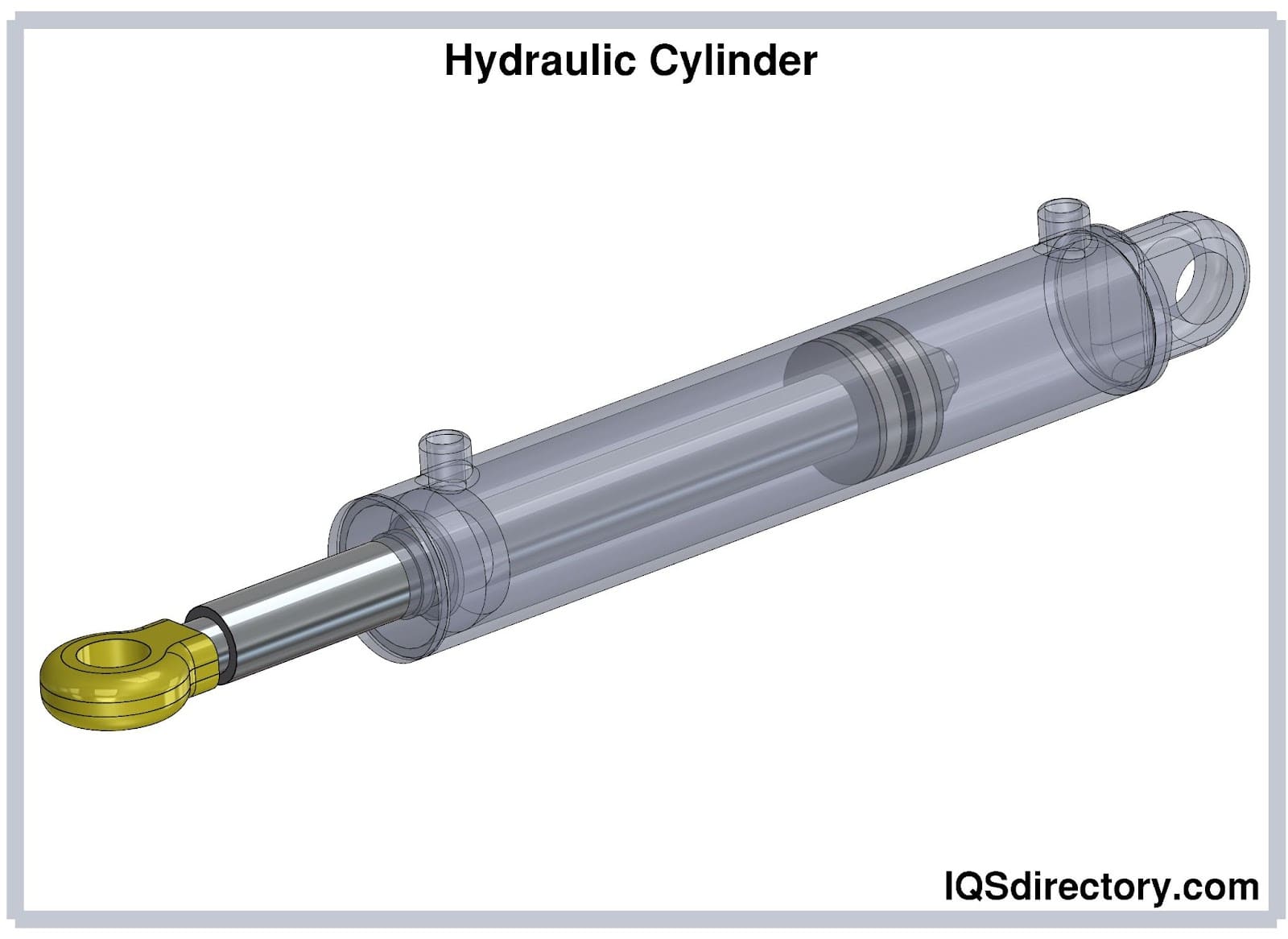
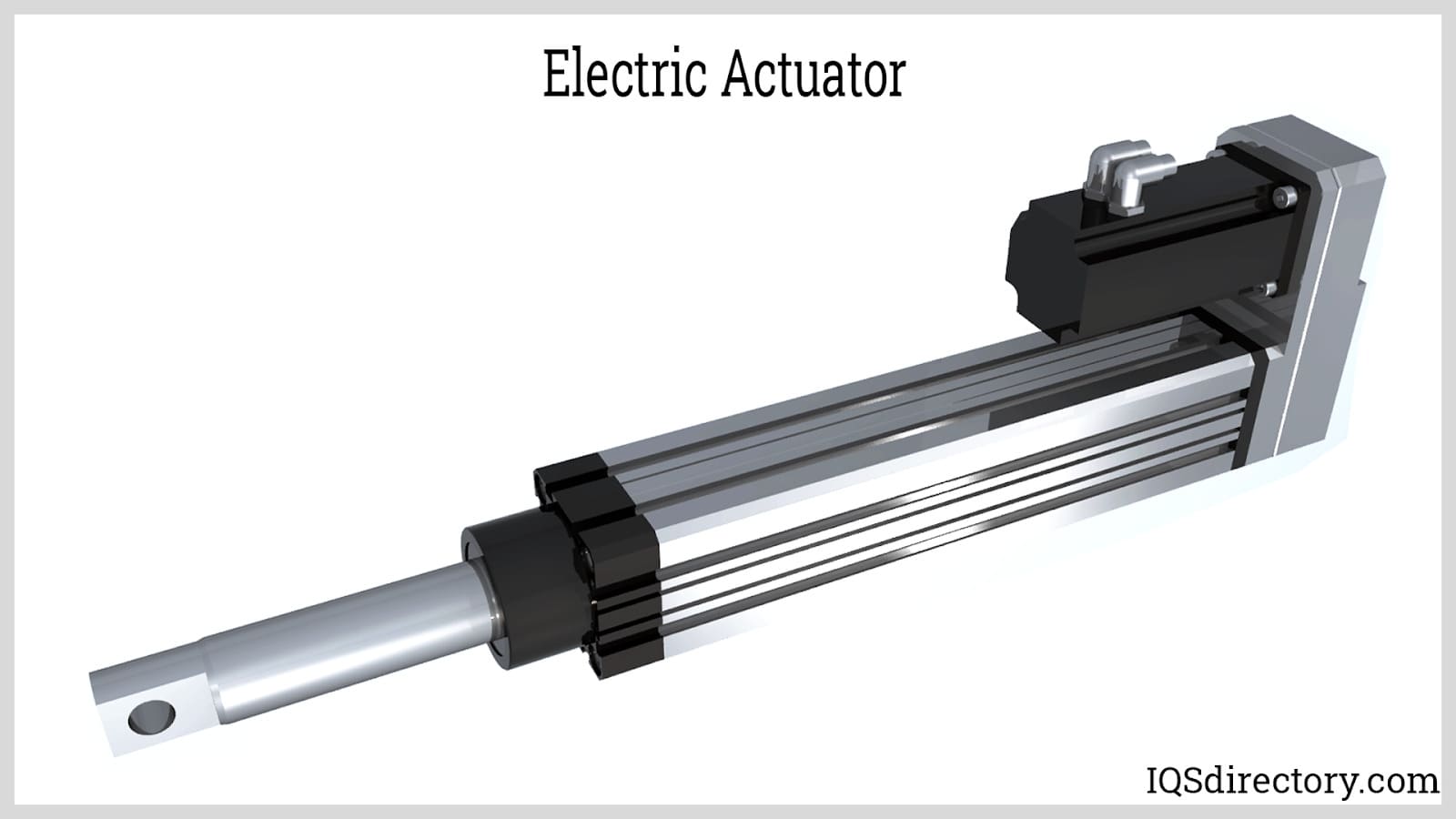
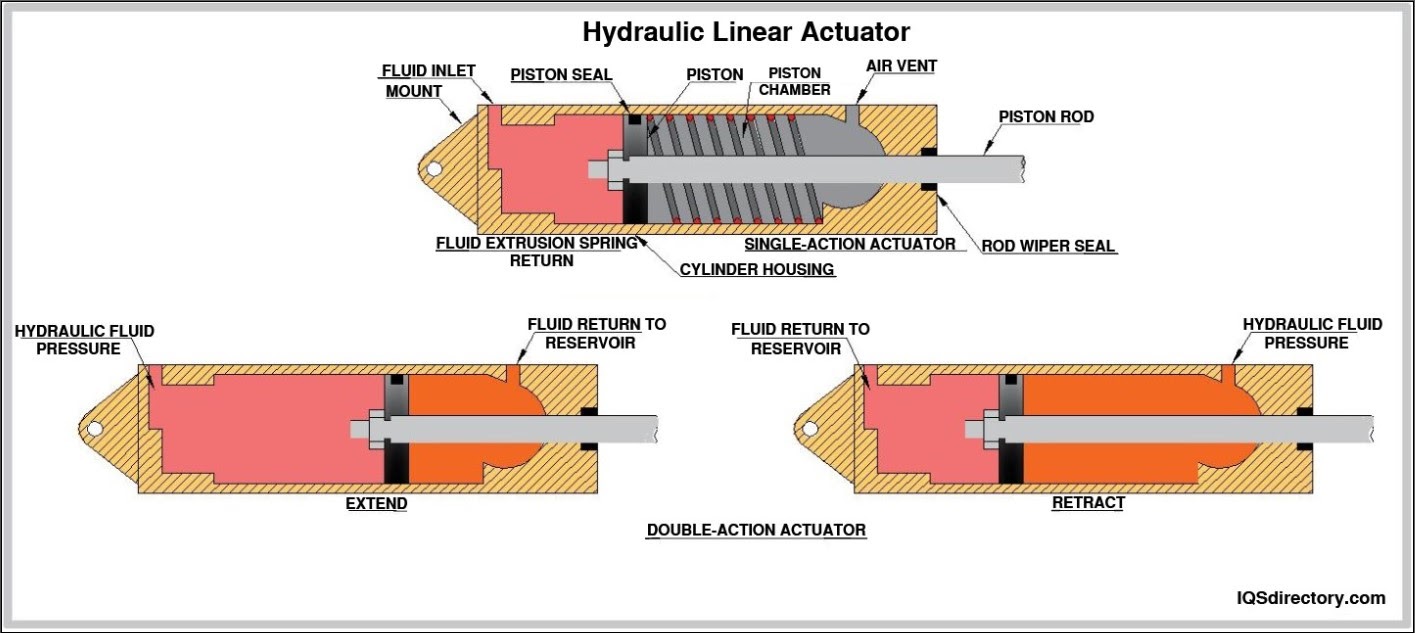
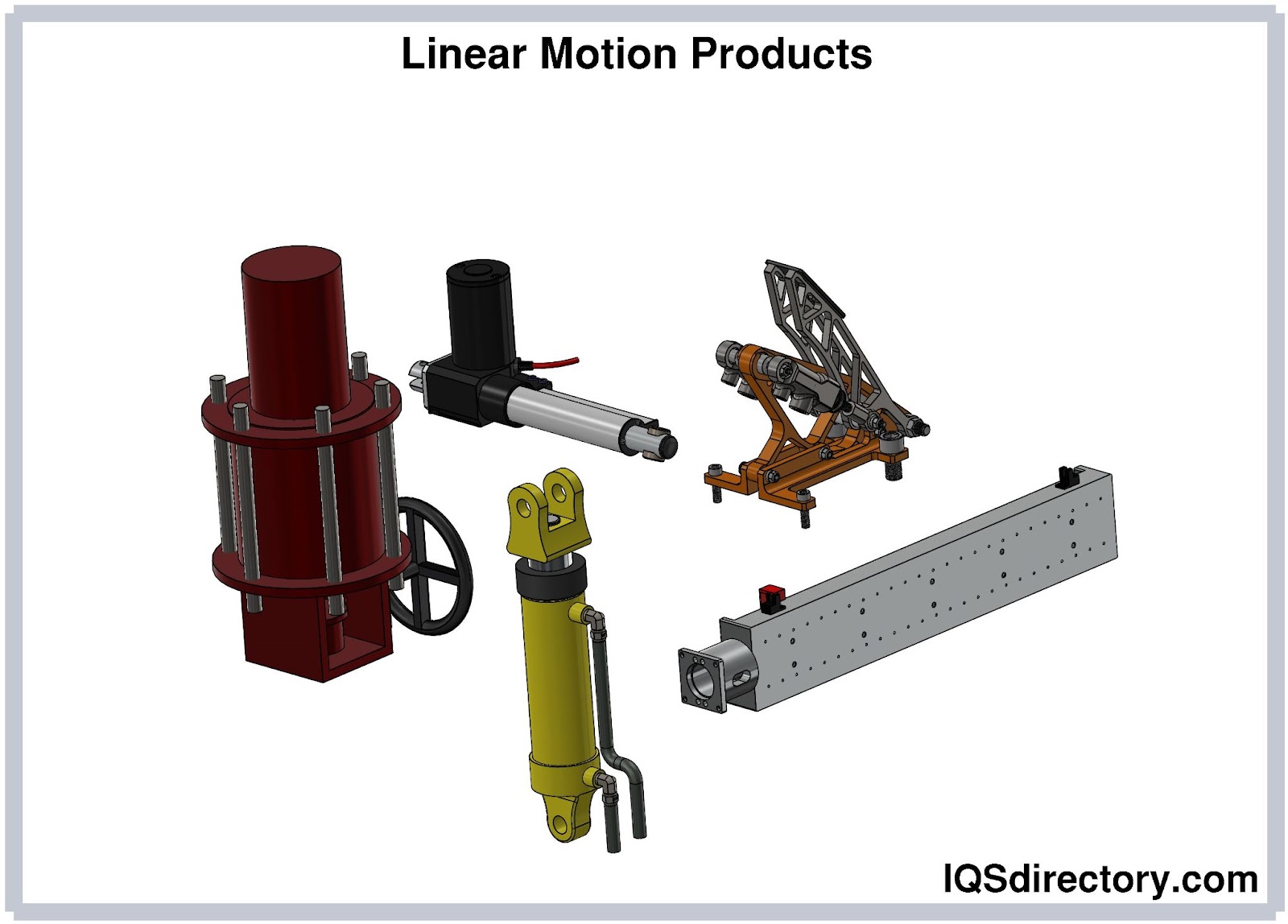
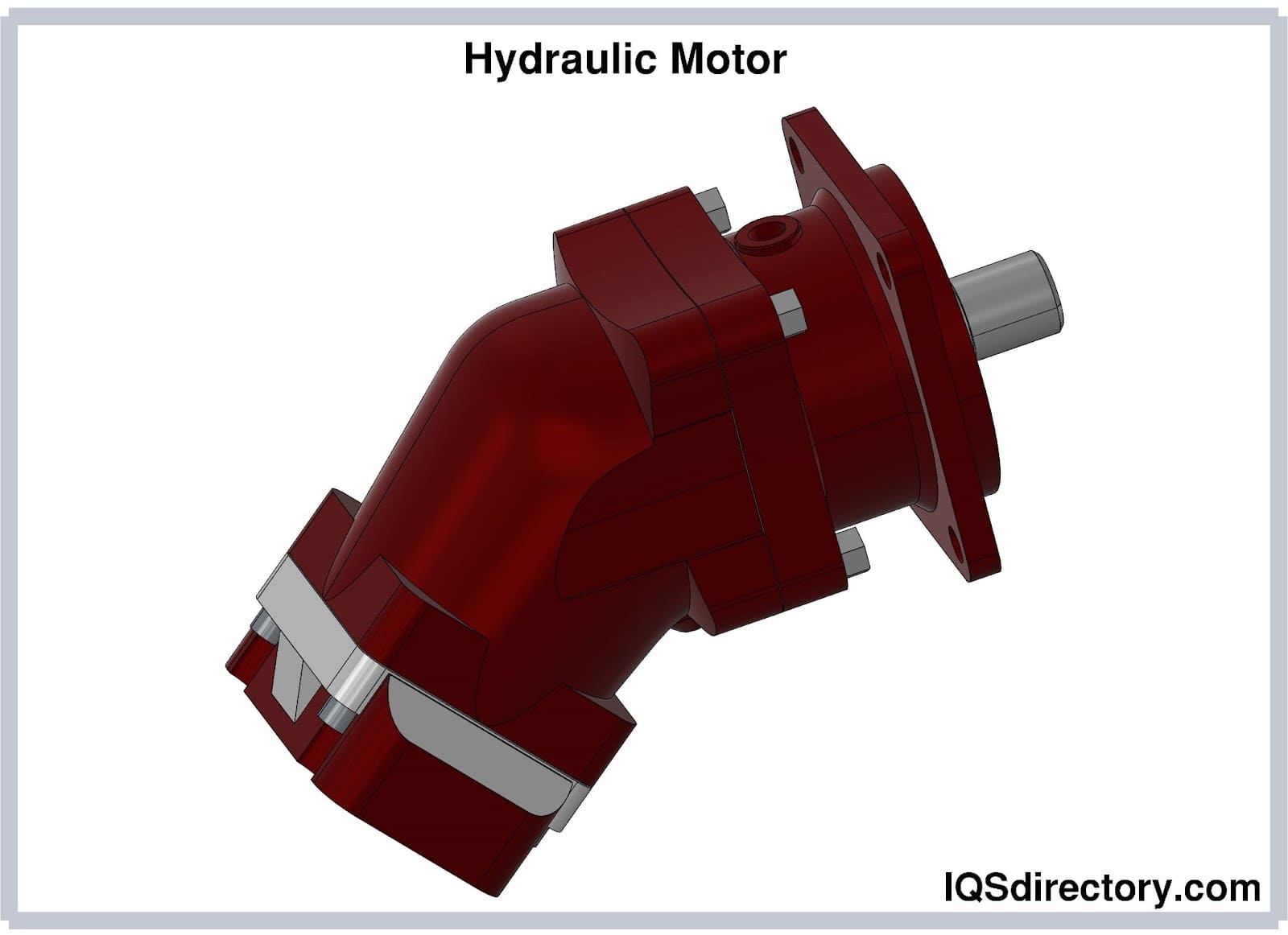
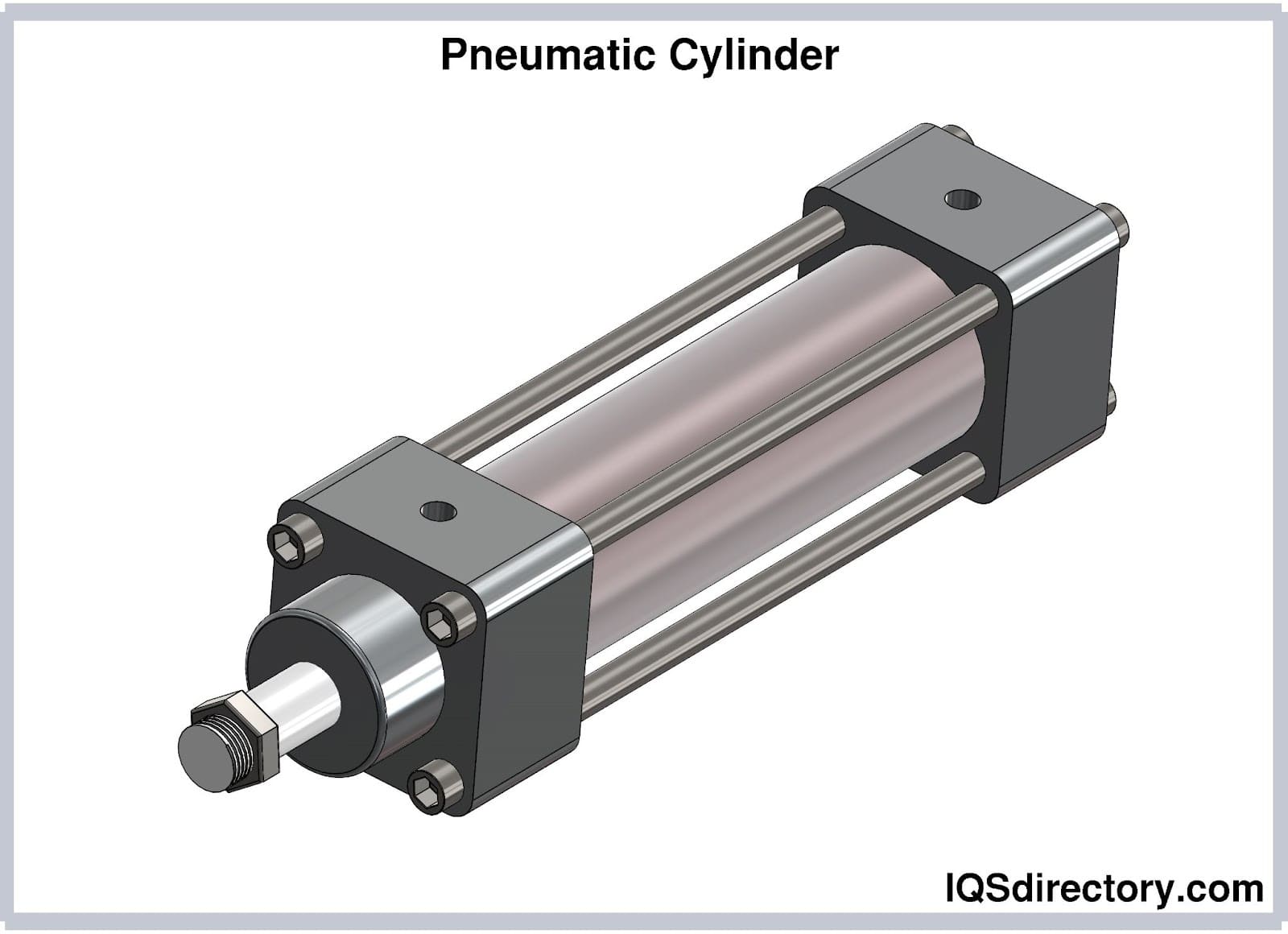
 Hydraulic Cylinders
Hydraulic Cylinders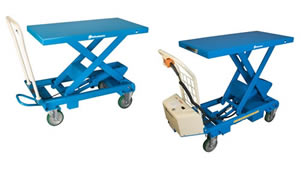 Hydraulic Lifts
Hydraulic Lifts Hydraulic Motors
Hydraulic Motors Hydraulic Presses
Hydraulic Presses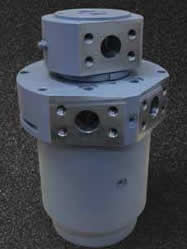 Hydraulic Pumps
Hydraulic Pumps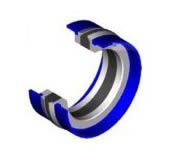 Hydraulic Seals
Hydraulic Seals Hydraulic Valves
Hydraulic Valves Castings & Forgings
Castings & Forgings Bulk Material Handling
Bulk Material Handling Electrical & Electronic Components
Electrical & Electronic Components Flow Instrumentation
Flow Instrumentation Hardware
Hardware Material Handling Equipment
Material Handling Equipment Metal Cutting Services
Metal Cutting Services Metal Forming Services
Metal Forming Services Metal Suppliers
Metal Suppliers Motion Control Products
Motion Control Products Plant & Facility Equipment
Plant & Facility Equipment Plant & Facility Supplies
Plant & Facility Supplies Plastic Molding Processes
Plastic Molding Processes Pumps & Valves
Pumps & Valves Recycling Equipment
Recycling Equipment Rubber Products & Services
Rubber Products & Services